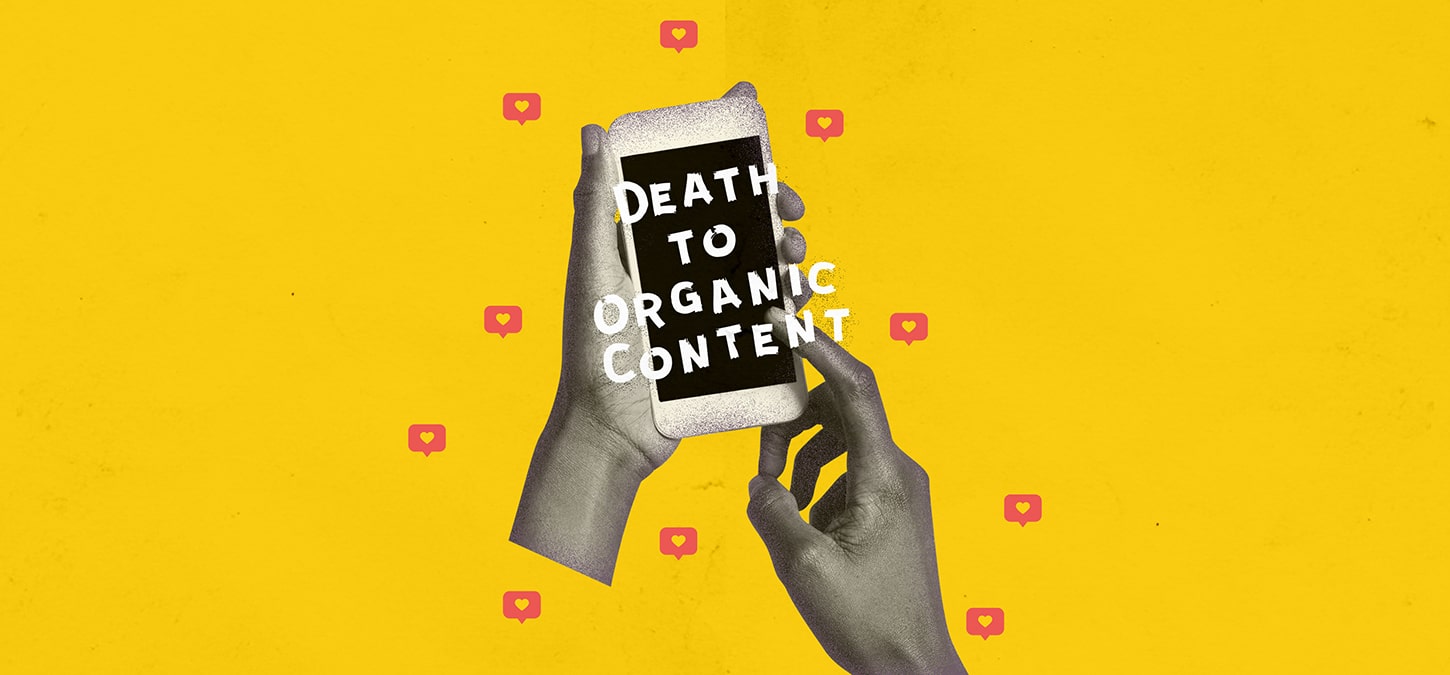Death to Organic Content

A shameful amount of my disposable income goes toward my dog’s well-being. He’s a regular feature on my Instagram, always benefits from my Amazon orders and my Google search history is flooded with searches like dog and human matching pajama sets (an obvious need.)
So it wasn’t a surprise to me – a digital marketer – when a dog food company started serving me targeted ads based on my posting and search history. This type of personalization through social media ads isn’t new. In fact, it’s almost necessary to implement for any campaign to be successful.
To the consumer with little to no experience in digital advertising, it’s a little bit of magic and a, “Are they listening to me?!” moment if brands target their ads just right. And the (amp) team are the wizards behind that kind of sorcery.
For us, building personalized content and ads starts in the initial research stages with clients. We often learn they don’t have the time to create detailed targeting groups or aren’t impressed with results they’re getting. Or, maybe, they aren’t quite sure how to begin when it comes to executing personalized campaigns at all. After getting this insight, we like to learn more about the type of content being produced.
Content, and ultimately content calendars, are the foundation to personalized ads on social. We can learn a lot from a client’s content calendar, such as what type of messaging the audiences are engaging or not engaging with. We often see that brands are casting a “wide net” of general content without any customized content.
We get it, brands are busy, but that’s where we can help.
Worse than producing a wide net of content, many brands still aren’t putting any paid media behind their messaging, and therefore missing personalized messaging altogether.
We’ve said it once and we’ll say it again:
Putting organic content out on social without any paid media support is a death wish for your goals.
Five years ago, brands could have gotten away with post + pray, yet still reached a decent – but not defined – audience on Facebook. But time and algorithm changes continue to change how we execute social media. In fact, a big adjustment for marketers happened in 2018 when Mark Zuckerberg announced the latest Facebook algorithm update would show more posts from friends and less from brands.
(amp) was ready for this change, because we execute personalized campaigns on the daily on major platforms like Facebook, Instagram, Twitter, LinkedIn and Pinterest.
Once we’ve exhausted our research phase and understand a client’s content calendar, or created it ourselves, we create targeting groups and a media plan to get a client going with personalized ads.
For example, the dog food company I mentioned earlier created a targeting group that I fell into, and they reached me on Facebook. It’s likely they used targeting that involved someone within my age range, located in a specific area of the country that had an interest in dogs based on what they posted on social media. That’s only a glimpse of an idea what they, and specifically what (amp), can do in terms of targeting.
Ad targeting is what makes personalized social media ads “personalized.” There is no one-size-fits-all in terms of what should or shouldn’t consist in an ad group targeting. We determine our targeting based around our expert findings in the research phase and then in turn create custom ads and messaging to resonate with that audience most.
For instance, (amp) has a retail client with primary sales in the Midwest. Based on our findings, we knew part of the segmented audience was interested in the client’s product in the outdoors and hunting season. We decided to create a message in our content calendar focused on the beginning of hunting season. We amplified the message through paid media by using personalized targeting methods like selecting Midwest cities and hunting and outdoor interests.
Not only did we surpass the national benchmark rate for engagement for this post, we were able to create conversations with fans and talk with users that had not yet heard about our product through community management.
Our understanding and testing of personalized social media ads never stops after a campaign concludes. Not only do we have our own secret sauce of creating targeting groups, we also use valuable data from our in-house Digital Performance team. They help to pull out conversation insights like specific key terms being searched, trends in the client industry and competitor findings to help us continuously improve our targeting for personalized ads and content.
Reaching the right audience versus reaching the largest audience through personalized social media is what’s happening now. It’s the premise of our company’s mantra: Market Less. Matter More.